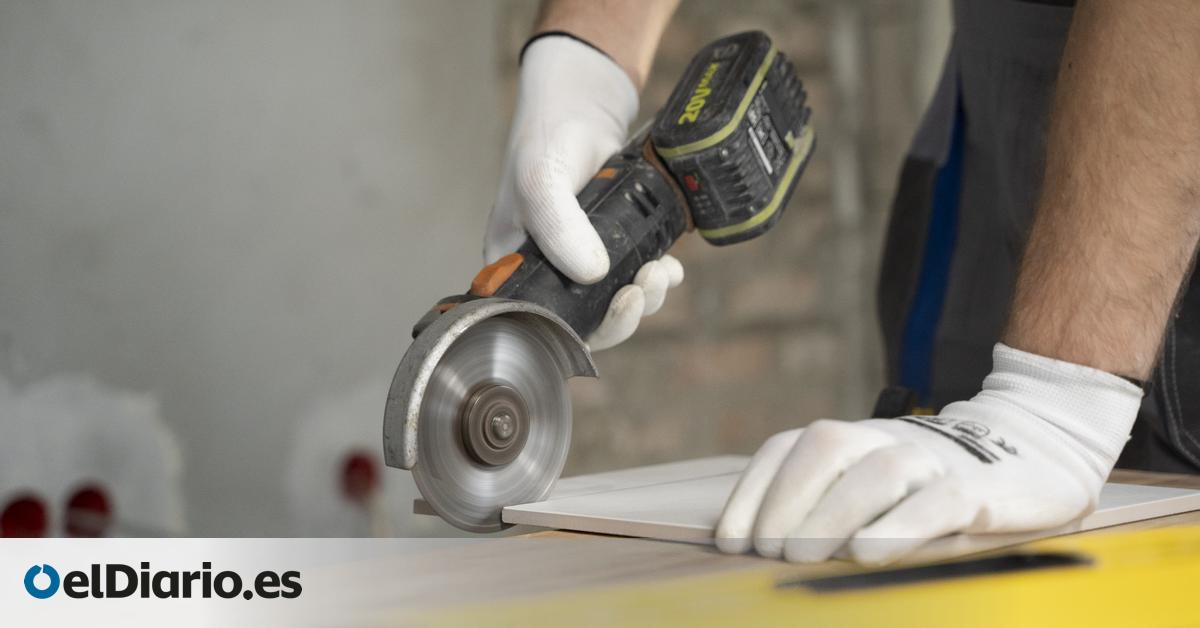
“Spain has become one of the zero areas of the silicosis epidemic observed in the last decade and a half among the workers of the quartz agglomerates. ”With this forcefulness the report of the Ministry of Health entitled is expressed The remergence of silicosis in Spain, that collects the data updated until 2024 on the alarming evolution This respiratory disease in Spain, mostly driven by work with countertops with a high content in crystalline silica.
The report indicates an accused growth of cases since 2007, to reach an average of 404.2 annual parties for this disease in the 2015-2019 period, 1,423.2% increase with respect to the 1990-1994 series. Specifically, from 2007 to 2024, 5,900 parts for silicosis have been communicated in Spain, with a peak above 500 cases in 2024, as Eldiario.es advanced. Given this situation, the authors of the document recommend considering the prohibition of material, as Australian authorities have done and as British experts recently claimed.
Consider prohibition
“Since Spain is the western country that has experienced the most early and intense remergence of silicosis in the 21st century, we recommend studying the processes launched in other countries to consider the prohibition of quartz agglomerates (Australia, 2023) or the much stricter regulations of work with these materials (California, 2024),” the authors of the report point out. The text emphasizes that the Australian experience offers a model of approach to the problem and implementing the precautionary principle “that reminds us that public and work health policies do not have to permanently resign the management of toxic substances at work and the subsequent and insufficient compensation of the damage.”
“In the report it is recommended to raise the debate and that is undoubtedly a measure that will have to be considered,” says Alfredo Menéndez Navarro, professor at the University of Granada (UGR) and co -author of the document, consulted by the prohibition. “It is a diagnosis so that no one continues to postpone decision making due to lack of knowledge of the problem.” In any case, he warns, it will be the crystalline silica working group built within the National Commission for Health and Safety at work where administrations and social agents must pronounce on the subject.
It is a diagnosis for anyone to continue postponing decision making due to lack of knowledge of the problem
Alfredo Menéndez Navarro
— Professor of the University of Granada (UGR) and co -author of the report
In a previous document, Menéndez and Catherine Cavalinresearcher at the National Center for Scientific Research (CNRS) in Paris, described the Australian prohibition as “modelic”, Because of the way in which the decision was gestured, its“ solid scientific and socio -labor foundation, and for the application of the precautionary principle. ”A recent editorial of the magazine Bronchopneumology archives He pointed in the same direction. “It is urgent to consider firm measures, which include the prohibition of those types of artificial stone that have already demonstrated a high degree of toxicity, or that they are expected to do so based on their composition,” said their authors.
“It is necessary to launch a multidisciplinary work group (doctor, technical, legal, social agents …), to address this problem and take the most appropriate measures having as its main objective to avoid the reduction of health in the workers,” says Cristina Martínez, an expert in silicosis and a member of the area of respiratory diseases of environmental origin of the Spanish Society of Pneumology and Thoracic Surgery (separation). “At present, silicosis in Spain is a public health problem.”
Silicosis in Spain is a public health problem. It is necessary to launch a multidisciplinary working group to address it
Cristina Martínez
— Silicosis expert and separation
Antonio León JiménezHead of Pneumology Service of the Puerta del Mar de Cádiz Hospital, Silicosis Reference Center for Artificial Stone, is manifested in the same line. “I think it is very successful to study the prohibition of silica countertops and also establish a way to get to know the concrete composition of the material with which it is replaced and everything that these boards make up,” he says. “Many have 10 and 20% resin and release volatile or aluminum organic compounds that reach the airways and can also cause damage.”
Cosentino, in the spotlight
The alarming figures point to the quartz conglomerates industry and leading companies in the sector such as the Israeli Caesarstone or the Spanish Cosentino, which has already had some legal litigation in our country for the consequences of the use of this material in workers. “The highest growth has been the Manufacture of other non -metallic mineral productswhich has accumulated 50% of the parties throughout the study period, ”says the document between 2007 and 2019, the vast majority (93.4%) of the parts of this sector corresponded to the Cut, carved and stone finishactivity that includes companies that work with quartz agglomerates and those that process natural stone.
Australian experience reminds us that public and work health policies do not have to be permanently resigned to the management of toxic substances at work
‘The remergence of silicosis in Spain’
— Ministry of Health
After its introduction in the market in the early 1990s, the consumption of quartz agglomerates grew during the construction boom, the authors write. “This has implied an increase in the risk of exposure to crystalline silica in the production centers, in the workshops in which they are mechanized and in the residential building in which they are installed.” On the other hand, the report affects, “the assistance processes by the main diagnosis are concentrated in territories where the new risk sectors that contribute to the remergence of silicosis in Spain have greater presence.”
The report also emphasizes the growth of the number of young workers attended by these conditions, attracts attention to the association between silica exhibitions and lung cancer cases, recommends recognizing the work origin of this disease and extreme the monitoring and monitoring measures on the main productive sectors that are at the origin of this peak of cases.
From the Cosentino company they insist that quartz agglomerates, like any other product that contains crystalline silica, can be worked totally safe if the measures are well known by all professionals in the sector are applied. “It is the lack of application of security measures and not the product that causes the appearance of occupational diseases,” says company sources, who remember that their current range of countertops contains less than 40% silica and this summer will launch a new category with “zero silica.”
Source: www.eldiario.es

